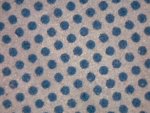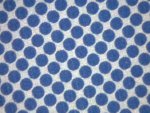What area are you looking at?
What area are you looking at?
Hi Nishanth,
In what areas do you see a variety of shapes? In a "flat tint" area, an area which has exactly the same tone? (Such as a square of 30% black?) Or are you looking into a color halftone area?
I would be surprised if Screen produces dots that are any less Round or Elliptical than any other manufacturer in an area of uniform tint. Screen has been doing digital screening for 30 years or more, and understands screening very well. (I used to work on a Screen Sigmagraph system in the early 90's, and it produced top-quality screening.)
I suspect you might be looking closely at a small area of a color halftone, in which dots from different colors overlap different color pixel boundaries in the underlying color image. You will see many strange shapes and partial dots in these areas, as the result of overlaying a 1-bit screening grid at 2400/2540 dpi over an 8-bit color separation at 300 dpi, or similar. It's simply what happens when the dots are trying to faithfully reproduce the color changes in an underlying color image. Every workflow produces the same results, in this respect.
Do you have a new TIFF viewing tool that allows you to see a digital bitmap up close for the first time? Maybe it's not a case of being bad, but just being different from what you expected. What are the results like on press?













